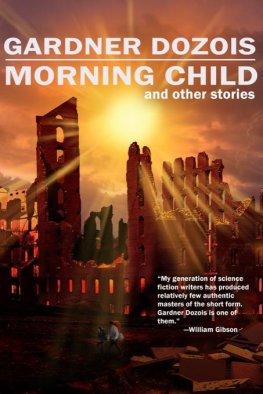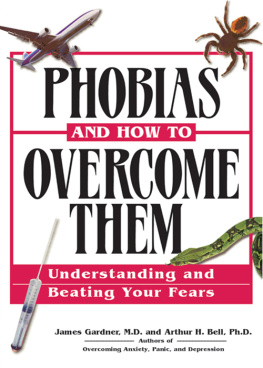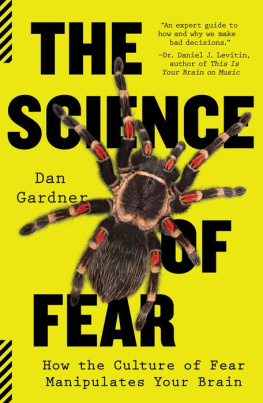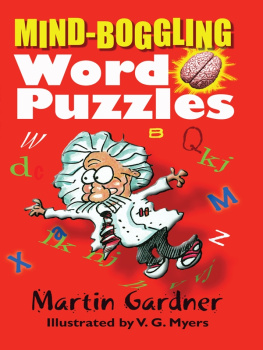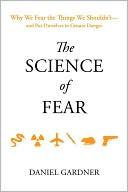Risk
This eBook is copyright material and must not be copied, reproduced, transferred, distributed, leased, licensed or publicly performed or used in any way except as specifically permitted in writing by the publishers, as allowed under the terms and conditions under which it was purchased or as strictly permitted by applicable copyright law. Any unauthorised distribution or use of this text may be a direct infringement of the author's and publisher's rights and those responsible may be liable in law accordingly.
ISBN 9780753516164
Version 1.0
www.randomhouse.co.uk
First published in Great Britain in 2008 by
Virgin Books Ltd
Thames Wharf Studios
Rainville Road
London
W6 9HA
First published in Canada in 2008 by McClelland & Stewart Ltd.
Copyright Dan Gardner, 2008
The right of Dan Gardner to be identified as the Author of this Work
has been asserted by him in accordance with the Copyright, Designs
and Patents Act, 1988.
This electronic book is sold subject to the condition that it shall not by way of trade or otherwise, be lent, resold, hired out, or otherwise circulated without the publisher's prior consent in any form other than that in which it is published and without a similar condition including this condition being imposed on the subsequent purchaser
A catalogue record for this book is available from the British Library.
ISBN: 9780753516164
Version 1.0
For Sandra
'Fear is implanted in us as a preservative from evil;
but its duty, like that of the other passions, is not to
overbear reason, but to assist it.'
Samuel Johnson
Prologue
Anyone who saw it will never forget it. And almost everyone saw it.
When the first jet darted out of that crisp, blue September sky and crashed into the World Trade Center, only a single television camera on the street filming city officials doing some mundane task now long forgotten captured the image. But as the tower burned, alerts flashed through wires and airwaves. The world's electronic eyes turned, opened, and waited. When the second plane streaked in, an immense audience perhaps hundreds of millions saw the jet, the angry explosion, the gushing smoke, the glass and steel raining down like confetti in a parade. They saw it live. It was so clear, so intimate. It was like watching the whole awful spectacle through the living-room window.
Those who didn't see the attack live soon would. In the frantic hours and days that followed, the images were repeated over and over and over. They were everywhere. From London to Moscow and Tokyo. From the peaks of the Andes to the forests of Madagascar and the Australian desert. In every city, region, and village within reach of modern communications media almost the entire planet people witnessed the tragedy. Never in the history of the species had there been such a communal experience.
Almost 3,000 people died. Hundreds of thousands lost family and friends. It was an enormous crime. And yet, the attacks of September 11 did not inflict personal loss on the overwhelming majority of Americans, much less the population of the world at large. On September 12, the rest of us had to go back to the daily routine of living. But things had changed. How could they not after what we had seen?
Some of the changes were small, or at least they seemed trivial next to what had happened. People stopped flying, for one. When commercial air travel resumed several days after the attacks, the planes taking off were almost empty.
A big reason was those images. They were so visceral. Sure, there are lots of flights every day and the chances of being on one that gets hijacked and slammed into an office tower may be tiny. But that didn't seem to matter. Airports were unnerving. Flying felt strange and dangerous.
We all got to know the victims' families in the weeks and months after the attack. The media were filled with interviews, profiles, and terrible stories of loss, making the shocking event even more deeply personal. And there was so much talk of worse to come. Politicians, pundits, and experts talked about terrorism as if it were the Fifth Horseman of the Apocalypse. Death and destruction could come countless ways, we were warned: poison in town water supplies; planes crashing into nuclear reactors; genetically engineered smallpox virus unleashed in the subway; dirty bombs; suitcase nukes in the hold of some anonymous cargo ship.
Then came the news that several people had been killed by anthrax-infected mail. Anthrax. No one saw that coming. Months before, we were safe and prosperous. Suddenly, we were butterflies in a gale. Grim-faced politicians advised everyone to pay attention to colour-coded terror alerts. Stock up on emergency supplies. Don't forget to buy duct tape so you can seal windows and doors against chemical or biological attacks. And while you're at it, pray to God almighty that we might see the next day's dawn.
It was an unreal, frightening time and it was predictable that people would flee the airports. Perhaps surprisingly, though, they didn't start digging backyard bomb shelters. Instead, most went to work and carried on living. They just didn't fly. They drove instead.
Politicians worried what the mass exodus of Americans from planes to cars would do to the airline industry, so a bailout was put together. But no one talked about the surge in car travel. Why would they? It was trivia. There were deadly threats to worry about.
But what no politician mentioned is that air travel is safer than driving. Dramatically safer so much so that the most dangerous part of a typical commercial flight is the drive to the airport.
The safety gap is so large, in fact, that planes would still be safer than cars even if the threat of terrorism were unimaginably worse than it actually is: An American professor calculated that even if terrorists were hijacking and crashing one passenger jet a week in the United States, a person who took one flight a month for a year would have only a l-in-135,000 chance of being killed in a hijacking a trivial risk compared to the annual l-in-6,000 odds of being killed in a car crash.
Risk analysts knew all about this safety gap. And they understood what a large-scale shift from planes to cars would mean. It's simple mathematics. If one person gives up the relative safety of flying and drives instead, it's not a big deal. He will almost certainly survive. But if millions of people take the same risk, it is just as likely that some of them will lose the gamble and their lives.
But car crashes aren't like terrorist hijackings. They aren't covered live on CNN. They aren't discussed endlessly by pundits. They don't inspire Hollywood movies and television shows. They aren't fodder for campaigning politicians. And so in the months following the September 11 attacks, as politicians and journalists worried endlessly about terrorism, anthrax, and dirty bombs, people who fled the airports to be safe from terrorism crashed and bled to death on America's roads. And nobody noticed.
Or rather, few people noticed. Gerd Gigerenzer, a psychologist at the Max Planck Institute in Berlin, patiently gathered data on travel and fatalities. In 2006, he published a paper comparing the numbers five years prior to the September 11 attacks and five years after.
It turned out that the shift from planes to cars in America lasted one year. Then traffic patterns went back to normal. Gigerenzer also found that, exactly as expected, fatalities on American roads soared after September 2001 and settled back to normal levels in September 2002. With these data, Gigerenzer was able to calculate the number of Americans killed in car crashes as a direct result of the switch from planes to cars.
It was 1,595. That is more than one-half the total death toll of history's worst terrorist atrocity. It is six times higher than the total number of people on board the doomed flights of September 11. It is 319 times the total number of people killed by the infamous anthrax attacks of 2001.






